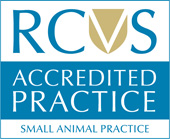Getting a new pet is an exciting experience, and naturally, you are keen to get them back home to begin life as part of the family. However, for your new pet this can be a very stressful occasion, therefore it is important to ensure that you have fully prepared for their arrival and take things nice and slow to make their integration into your home a successful one. We have put together some top tips below that we believe will help you through the process:
- GIVE THEM SPACE
Dogs
It’s important that your dog can settle in their new surroundings, and the best way to do this is to ensure that they have their own quiet space, where they will feel safe and secure and can use as their place to sleep. Undertaking some crate training could be a good idea, as the dog can associate the crate as their own personal den. Be sure to leave the door open to begin with so they can get in and out, and never use the crate as a way of punishment. Make this area more comfortable for them by covering their bed with an old duvet or blanket. A plug-in pheromone diffuser could also help – these imitate the chemicals that a mother dog would release, providing familiarity for your dog.
Cats
Set up a dedicated room in the house, before you collect your new cat, that includes everything they will need such as litter tray, choice of sleeping places, scratching post, access to high spots, separate food and water areas and selection of toys. Once home, allow your cat to explore their own area and when comfortable in their own space, and provided you have no other pets, you can allow them to explore the rest of the house of their own accord. Make sure windows and doors are closed so they cannot get outside, but always ensure they have access to their safe place in case they need to retreat.
- MEETS & GREETS
Dogs
It’s understandable that you will be keen to introduce your new companion to family and friends, but this needs to be handled in the right way. It is important to socialise them with as many people as possible, however stagger any introductions so that they are not overwhelmed and, where possible, hold these in an open area such as your garden so that your dog doesn’t feel trapped and you are able to adhere to social distancing guidelines.
Cats
You can start to introduce your cat to other family members once you feel that they are confident with you, but it is important not to overwhelm them with new people and experiences. If you have children in the house, ensure they remain calm when meeting the cat for the first time. Always allow your cat to come to them, and once it does, show them the correct way to gently touch and stroke it – as even the friendliest cats can react if they are pulled and pushed too much.
- GIVE IT TIME
Dogs
This is a new situation for both you and your dog therefore allow plenty of time (usually four to six months) for them to settle in and re-adjust to being part of your world. They will need time to build that new relationship with you, so take things one step at a time, rewarding co-operation with a small treat.
Cats
Although the first few hours once bringing your cat home can affect how they accept their new life, be sure to be patient and never rush your cat in to doing things. It is always stressful for a cat when changing environments therefore expect for it to take at least a couple of weeks for them to feel relaxed in your home.
- OUTSIDE THE HOUSE
Dogs
As well as settling your new pet in to your home, it is important to familiarise them with the surrounding areas that they are likely to encounter on their walks. However, before taking them out, make sure to check that their vaccinations are up to date to avoid any infections and that they are micro-chipped.
Cats
After about three or four weeks your cat should have adjusted to their new surroundings and be familiar with where their food is coming from. This a good time to think about letting them go outside to explore. Kittens should always be supervised, and you should not let your cat outside on their own until they have been neutered and micro-chipped. Until your cat is used to coming back freely, it is worth only letting them out when they are hungry so that you can tempt them back with food.
If your new pet is not your first, then the above tips can still apply, but more thought needs to be given about how both are kept separate and the best time and process for introducing them to each other. More information on this can be found at:
https://www.bluecross.org.uk/pet-advice/introducing-cats
https://www.dogstrust.org.uk/help-advice/dog-care/dogs-and-cats-living-together
https://icatcare.org/advice/helping-your-new-cat-or-kitten-settle-in/
If you would like to register your new pet with us, or have any questions about vaccinations or neutering, please contact us for friendly advice.




